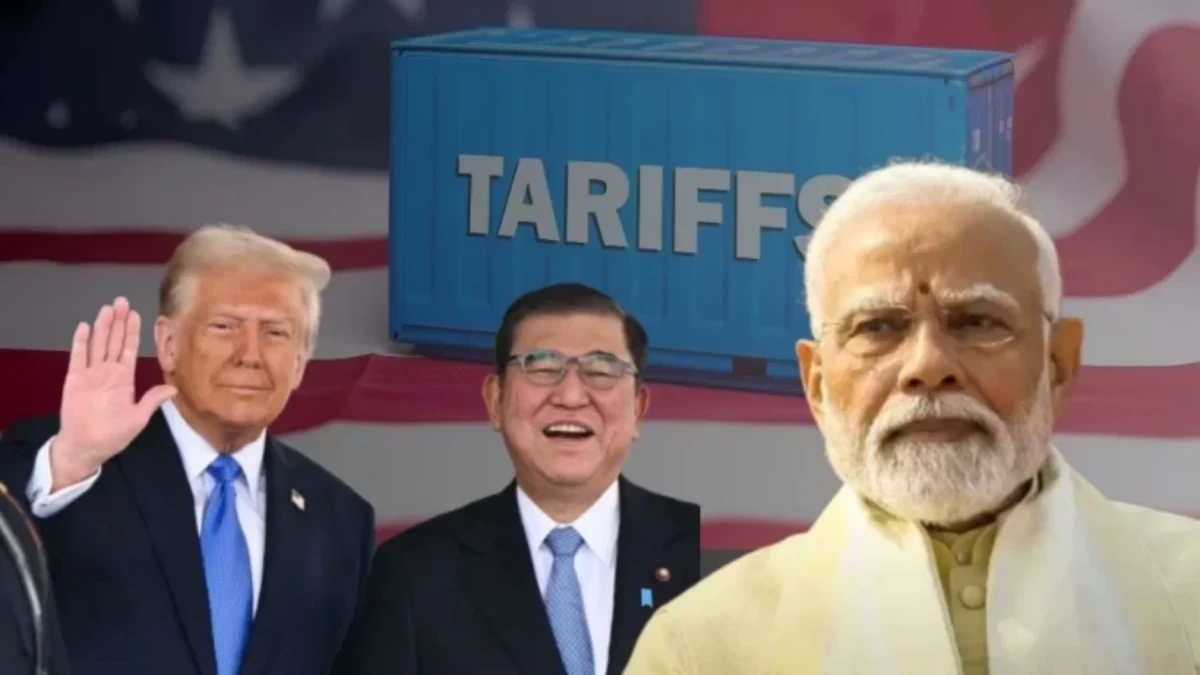
The recent US-Japan trade deal provides an instructive case study as India continues its intricate negotiations with the US for a bilateral trade agreement. Even though Washington hailed the deal as a huge victory, especially for gaining access to Japan’s agricultural market, Japan actually gained a strategic advantage in secret, particularly for its auto industry.
For Indian negotiators, this deal is both a lesson and a warning: strategic concessions and tactical patience can make all the difference in high-stakes trade negotiations with the US.
India Urged to Tread Carefully in U.S. Trade Deal Talks, Warns Leading Think Tank
US-Japan Trade Deal: A Quiet Victory for Tokyo

Japanese automakers were granted reduced tariffs as a result of the US-Japan trade deal, which former President Donald Trump called “the biggest deal ever made.” The US originally proposed a 25% tariff on Japanese auto exports; however, the new tariff is 15%. Given that increased taxes on imports from Canada and Mexico have put US manufacturers like GM, Ford, and Stellantis at a competitive disadvantage, this concession is noteworthy.
Japan, meanwhile, made clear concessions on agricultural imports and promised significant investments in the US, which were a front for their true victory, which was to preserve and grow their vital auto sector.
Why the Auto Sector Mattered Most to Japan

In Japan, cars are not only a major export but also a major economic driver, contributing roughly 10% of GDP and 20% of manufacturing GDP. This industry is where the trade disparity with the US is most noticeable. This is why Japanese negotiators travelled to Washington several times over a six-month period in order to secure favourable conditions.
And the outcome? In contrast to their American rivals, who depend on a highly integrated supply chain spanning the US, Mexico, and Canada, Japanese automakers are currently enjoying advantageous tariffs. Experts in the field predict that these increased tariffs could result in a $12,000 price increase for cars like the Ford F-150.
Ironically, this victory for Japan occurs during an administration that, as early as 1987, strongly denounced Japanese automakers for “taking advantage” of the United States.
Trump Media Reveals $2 Billion in Bitcoin Holdings as Part of Bold Crypto Strategy
Tariffs and Trump’s Trade Vision

Trump has long used tariffs as a geopolitical and economic tool, focussing on leverage in his trade policy. The US Commerce Department estimates that these tariffs have increased trade by more than $100 billion in just six months. Additionally, they have contributed to larger objectives by bringing nations to the negotiating table on non-trade matters like defence cooperation or drug control.
A rare instance of a partner country using this strategy to its benefit offering little compromises while gaining substantial gains is the Japanese agreement.
European Union Considers Broader Countermeasures as US Trade Talks Stall
India’s Negotiating Table: Applying the Lessons

Washington wants access to genetically modified items like maize and soybeans, which is the main reason why continuing negotiations between India and the US have stagnated. Here’s how India can use the Japan example:
1. Offer Calculated Concessions
In order to win big on auto, Japan strategically offered investment pledges and access to the agri-market. India should think about making comparable concessions, such as granting restricted access in politically delicate industries in return for significant benefits in other areas, including labour-intensive manufacturing or services.
2. Focus on Labor-Intensive Exports
India is anticipated to advocate for US market access in sectors such as clothing, leather goods, and textiles. A tariff range of 10–15%, which is what the UK and Japan are offered, would be appropriate. India’s competitiveness would be diminished by anything nearer 20%, as granted to Vietnam.
3. Avoid Transhipment Pitfalls
Indian exports in engineering, electronics, and pharmaceuticals—all of which frequently employ Chinese inputs—could be harmed if the US imposes transhipment provisions, similar to those that were applied to Vietnam. India needs to make sure that supply chain sourcing is flexible.
4. Monitor the China Factor
Indian negotiators hope Washington will keep a tariff gap that benefits India, and they will be watching how the US handles tariffs on China. Should Trump win re-election and maintain or raise tariffs on China, India may profit—but only if it plays its cards well.
5. Sectoral Tariffs Are a Concern
India is already affected by the hefty (up to 50%) US tariffs on copper, steel, and aluminium. More taxes or Trump’s promised tariffs on BRICS nations for buying Russian oil would make things even more difficult.
Trump’s BRICS Tariff Threat Casts Shadow Over India-US Trade Deal
A More Flexible India

Reducing import restrictions on some intermediate items is a recent pragmatic action by India that could improve its standing in international supply chains. This adaptability could help you in negotiations.
India has made a strong push for professional mobility in the services sector, a delicate topic in both the US and the UK. India is looking for more from Washington, particularly in IT and skilled migration, despite the UK deal’s limited achievements.
Markets Track Trump’s Trade Actions as the Tariff Deadline Draws Near
Final Thoughts
India’s trade negotiations with the US are probably going to focus more on big numbers and structural improvements than on sector-specific issues like the UK accord. The lesson from the US-Japan trade deal, however, is very clear: what you gain and what you protect are more important than how much you give up.
Indian negotiators need to put structural advantages ahead of headlines. This includes maintaining strategic autonomy in important sectors, obtaining favourable tariffs where they are relevant, and leveraging flexibility to reap long-term benefits. India, like Japan, may win if it uses the negotiating table wisely.
